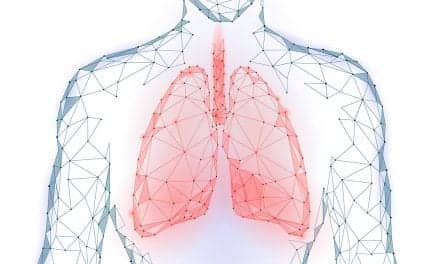Oxygen Tube Cap; Incentives for Increased Credentialing
Throughout chemotherapy and radiation to treat the lung cancer that eventually took his life on November 24, 2002, my father never complained. George Jewett was no whiner. He was an eternal optimist. He hoped the treatments would allow him to share more happy times with his family here on earth. At the same time, Dad knew he would enjoy eternal peace when the time came for him to go.
 Dad did not object to the seemingly never-ending needles, tubes, pills, or discomfort. He took it all in stride with the quiet grace of a doctor who had seen it and done it all before. During his 45 years as a physician, he most certainly had seen and done it all, but from the other side.
Dad did not object to the seemingly never-ending needles, tubes, pills, or discomfort. He took it all in stride with the quiet grace of a doctor who had seen it and done it all before. During his 45 years as a physician, he most certainly had seen and done it all, but from the other side.
When my father mentioned one day that the oxygen tubes that snaked from his nose and above his ears irritated the skin around his ears, I knew I had to find a way to make him feel more comfortable. He had tried those slotted cushions designed to wrap around the oxygen tubes at the ears, but they always seemed to slip out of position or fall off the oxygen tube. I excused myself from his hospital room and drove to a nearby variety/hardware store. I needed to come up with something that would secure those oxygen tubes in place, yet take the pressure off his ears.
In time, I settled on the following ingredients: a baseball cap, hooks attached to tiny plastic suction cups, and fast-drying glue. I chose a child’s baseball cap because it allows a wider field of vision than an adult cap with its large, protruding bill.
Back at my father’s hospital room, I had him place the cap in its most comfortable position. With a pen, I marked spots on either side of the cap above his ears. Assembling all the materials in my lap, I took only minutes to glue the plastic suction cups and hooks to each side of the cap.
Voila! While wearing the baseball cap, Dad could easily slip the oxygen tubes on or off the hooks on either side of the cap, and later, I made my father a similar contraption using a visor. The visor was cooler than the cap when the weather was hot, he said. Wearing either the hat or the visor during the day provided just enough relief so his ears did not become irritated while wearing the oxygen tubes over his ears at night.
When Dad first sported his “oxygen tube cap” at the hospital, his RT said he had never seen anything like it. He called in other RTs to take a look and my father’s doctor exclaimed, “It takes a lot to impress me, and that’s a great idea!” Everyone said I should patent the idea or mass market the product.
But Dad and I agreed that we would freely share the idea with everyone and anyone, in the hopes that someone might find a little bit of comfort.
—Lorraine Jewett-Burdick
Grass Valley, Calif
Incentives for Increased Credentialing
In your editor’s letter, “Raising the Bar” (February/March 2003), you posed the question, “What relationship do you believe increased credentialing might have with the current recruiting environment, in which the need for RTs is high?” If I were an LVN and went on to earn my RN, I would receive increases in responsibility, recognition, and pay. If I were then to earn my BSN, I would achieve the same result. The same outcome would result for earning CCRN, nurse practitioner, or nurse anesthetist. Conversely, as a respiratory therapist, my job is to provide respiratory therapy in the form of nebulizer treatments, CPT, ABGs, and ventilator management. Regardless of any further credentials I earn, my basic job description remains the same. With the sole exception of the pay increase that comes from going from CRT to RRT, there are no other pay increases with increased credentialing. Often the pay increase for earning an RRT is not enough to entice CRTs to put themselves through the rigors and expense of further schooling. There is no substantial recognition for further credentialing, nor are there any increases in responsibility. As one of my colleagues in the field put it, “I draw ABGs, blow nebs, suck snot, and twist knobs on ventilators. Further education will not change that.” My experience, sadly, has shown him to be right. Exceptions exist, but they are isolated, unstable, and apt to disappear on the whim of an administrator. The difference is clear. Nurses’ job descriptions change as their credentials do. Respiratory therapists’ job descriptions stay the same. I am a registered respiratory therapist with more than 15 years’ experience. I have worked side by side with therapists from all educational backgrounds, from OJTs on up to one fellow with a master’s degree in health care with emphasis on respiratory therapy. We all did the same job, with only a slight difference in our pay. Until this changes, it will be a hard sell to push for increased education as a means of promoting respiratory therapy. All the wishful thinking in the world won’t change that.
—Jay L. Pyburn, AS, RRT
Fort Worth, Tex









